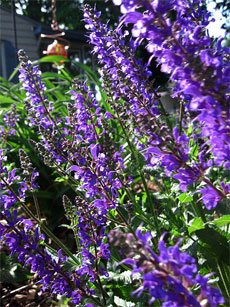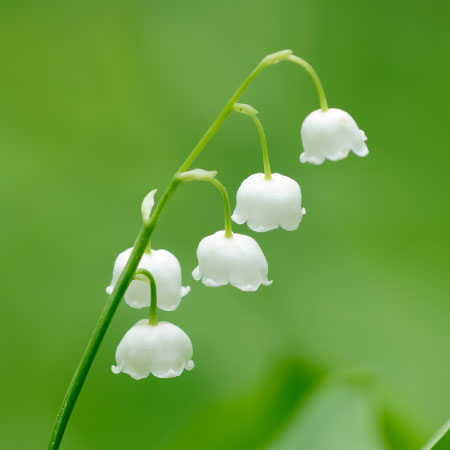Q&A With Katrina Blair, Author of "The Wild Wisdom of Weeds"


Katrina Blair began studying wild plants in her teens, when she camped out alone for a summer with the intention of eating primarily wild foods. After college, she founded Turtle Lake Refuge in 1998, a nonprofit organization whose mission is to celebrate the connections between personal health and wild lands. She has taught sustainable living practices through John F. Kennedy University, San Juan College in Farmington, NM, and Fort Lewis College in Durango, CO. She teaches internationally at retreats, festivals, and educational and healing events. She is also the author of a self-published cookbook, Local Wild Life: Turtle Lake Refuge's Recipes for Living Deep (2009). Katrina's latest release is "The Wild Wisdom of Weeds". Read on for more information about this book and find out how to win a copy, courtesy of Chelsea Green Publishing!
1) It is interesting to note that the Native Americans thrived on the plants discussed in your book. Where, along the way, did we start viewing these plants as weeds and rejecting them as the proven food/medicinal bounty that they are? And how does your book try to sway our attitudes back? And why is it important that we change the way that we view these "weeds"?
When our cultures began to adopt agriculture as a mainstream practice, some plants became more favorable because of their size or flavor. These plants were isolated out and hybridized to become even bigger or sweeter. As the commercial agriculture industry grew, the economic value of specific foods took priority and the weeds were targeted as the intruders. The mentality of labeling the wild weeds as "invasives" to the mono crop farming techniques lead to the excessive use of herbicides to try and get the upper hand with the intention of gaining more profit and yield of the desired crop. Unfortunately, the wild weeds outweigh, by far, the domesticated varieties of food in nutrition and adaptability. It is critical that we change this outdated perspective as soon as possible for many reasons. The current industrial agriculture business is not sustainable. The hybridized or genetically modified plants have weak genetics and cannot thrive in our changing climate without major damage to the ecosystem through petroleum chemicals. The wild weeds on the other hand are resilient in their ability to survive and impart this wisdom to our own bodies when we ingest them. The food value that is derived from the wild weeds is so rich and potent in nutrition, that we ultimately have to eat less and we will gain far more benefits to our health in the long run. 2) Your book features 13 weeds. Why did you choose these particular 13 to be in your book? I chose these specific plants because, in my travels, I noticed that they were growing everywhere that I went. I researched further and discovered that they indeed grew on every continent where permanent human civilization existed. They are some of the most common and easy to find plants in most places on earth nearby where humans live. They are accessible, abundant and incredibly nutritious for us. They also have been undervalued in some cultures and I felt it important to highlight their exceptional benefits for food, medicine and earth restoration. 3) What are some other weeds beyond the 13 essential ones featured in your book that you would also highly recommend? I would recommend burdock, nettles, elm trees, and crane bill also known as filaree as a few additional wild foods to incorporate into daily lifestyles. 4) If you were told that you could only harvest, utilize and survive on one of the thirteen weeds in your book, which would it be and why? It's a hard choice because they are all so unique and delicious in specific ways, but I would choose dandelions. The dandelion greens are a complete protein which gives the body the full ability to regenerate and perform all the essential bodily processes. The roots make a delicious food that becomes sweeter than a potato in the winter climate. The flowers are rich in pollen and taste like honey, and the seeds are highly nutritious and can be made into flour, blended into milk and offer exceptional fats for the body to thrive year round. 5) We know, for the most part, how to cook and preserve with the food we deliberately cultivate in our gardens. However, when it comes to "weeds," many of us might be clueless on what to do with them. How does your book help the clueless among us? The Wild Wisdom of Weeds shares techniques of harvesting, processing and recipes on how to utilize the wild weeds. The book offers insights on how to identify, when to harvest, which parts to use, and how to preserve them for the winter months as well. It is a fun journey to begin to weave these available plants into our daily habits. When we do, we start to feel rich and develop a deeper trust in the earth's abundance to sustain our basic needs right from the lands around us. 6) For those of us without a foraging spirit, can these weeds be grown deliberately in hanging baskets, raised garden beds and gardens? Yes, they can. Often you will notice that these wild weeds will have already found their way into your baskets, raised garden bed and gardens without you even having to invite them. They offer so much for us with less work on our part. However, you can also nurture them with extra water and soil nutrition and they will grow even bigger and more luscious for you.
| WIN A COPY OF THE WILD WISDOM OF WEEDS!To enter, simply leave a comment on this blog post by midnight on Sunday, April 17, 2016 (be sure to provide a valid e-mail address) in answer to the following question:When you encounter a weed, do you pull it, spray it"”or consume it?Be sure to include a valid e-mail address. The winner will be drawn at random from all qualified entrants, and notified via e-mail. (See Rules for more information.) |
UPDATE 5/26/2016: Congratulations to Kristen Chan!
Gardening tips, videos, info and more delivered right to your inbox!
Sign up for the Gardening Know How newsletter today and receive a free copy of our e-book "How to Grow Delicious Tomatoes".

Shelley Pierce was a writer for Gardening Know How, contributing to hundreds of articles for the site.
-
 How To Grow Seeds Quickly: 8 Expert Tricks For Fast Flowers & Crops
How To Grow Seeds Quickly: 8 Expert Tricks For Fast Flowers & CropsIt's never too late to start growing! Jump-start your flower or vegetable garden with these pro tips and tricks for germinating seeds in record time.
By Amy Grant
-
 8 Perfect Flowers To Plant With Tomatoes To Boost Yields & Banish Pests
8 Perfect Flowers To Plant With Tomatoes To Boost Yields & Banish PestsDon’t forget flowers when choosing companion plants for your tomato beds or pots. These pretty, fragrant blooms add beauty but are also highly beneficial.
By Mary Ellen Ellis